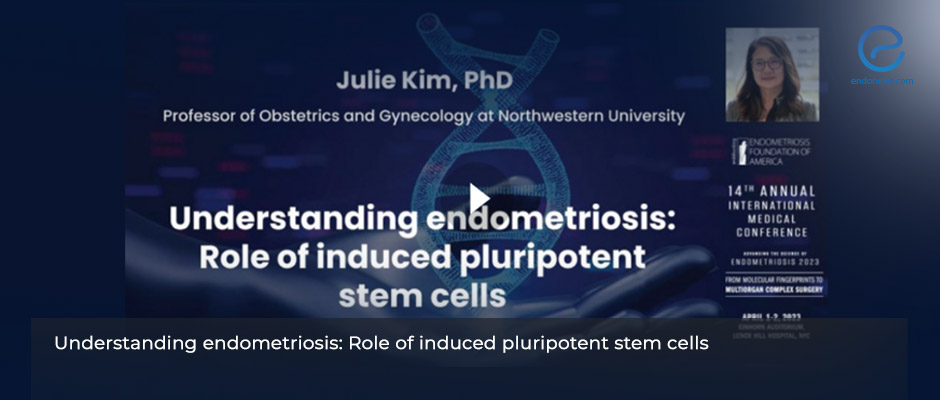Endometriosis disease modelling via induced pluripotent stem cells has been successful
May 8, 2023
Current endometriosis research from Kim Laboratory, Northwestern University yields promising results
Key Points
Highlights:
- The conference entitled “ Understanding endometriosis using induced pluripotent stem cells” was delivered by Dr. J. Kim at the Annual International Medical Conference of the Endometriosis Foundation of America held in New York on April 1-2, 2023.
- Main scientific theories of endometriosis include Sampson’s retrograde menstruation and also metaplasia of cells that transdifferentiate into endometrial cells at ectopic sites.
- With the exception of some non-human primates, animals do not develop endometriosis spontaneously. Endometriotic cells are difficult to culture and have a limited lifespan, leading to the development of other in vitro culture systems.
Importance:
- Challenges of modeling endometriosis are due to the multifactorial heterogeneous nature of the illness, limitations of non-primate animal models, limitations of in-vitro modeling, and tissue availability.
- Bone marrow-derived stem cells are known to associate with endometriotic lesions but their impact remains unclear.
What's done here:
- After reviewing the pathogenesis of endometriotic lesions unpublished preliminary results from the Kim Laboratory, Northwestern University endometriosis stem cell project “modeling endometriosis using induced pluripotent stem cells” are presented.
Key Results:
- Scientific research aiming to generate reliable disease models using the appropriate cells that interact in a physiological manner is most important, at this point induced pluripotent stem cells have opportunities for disease modeling.
- Successful reprogramming of peripheral blood marrow cells to induced pluripotent stem cells from women with endometriosis was achieved and these were directed to endometrial stromal cell differentiation at the Kim Laboratory.
Lay Summary
J. Julie Kim, S. Y. Hung Research Professor and Professor of ObGyn, Reproductive Science in Medicine, Northwestern University, Chicago, Illinois, has delivered a conference at the Annual International Medical Conference of the Endometriosis Foundation of America held in New York on April 1-2, 2023. Current valid main scientific theories of endometriosis include Sampson’s retrograde menstruation besides metaplasia of cells that transdifferentiate into endometrial cells at ectopic sites.
Problems of modeling endometriosis are inherent to the multifactorial heterogeneous nature of the illness as well as limitations of non-primate animal models, limitations of in-vitro modeling, tissue availability.
With the exception of some non-human primates, animals do not develop endometriosis spontaneously. Additionally, endometriotic cells are difficult to culture and have a limited lifespan, leading to the development of other in vitro culture systems. In this regard, bone marrow-derived stem cells are known to associate with endometriotic lesions but their impact remains unclear. The Kim Laboratory of Northwestern University, endometriosis stem cell project “Modeling endometriosis using induced pluripotent stem cells” has yielded preliminary unpublished results.
Endometriosis patient-derived induced pluripotent stem cells from five patients besides from five control subjects were obtained and directed to differentiate into endometrial stromal cells achieved on the 12th day. No difference in the morphology of cultured cells between the control and endometriosis lines, however when RNA sequence analysis of induced pluripotent stem cell differentiation was made, 18 up and 115 down-regulated genes were found in the endometriosis group. On the 15th day, 52 up and 192 downregulated genes were detected in the endometriosis group stromal cells. Via pathway analysis on the enrichment of immune-associated genes similar exciting findings were found.
Scientific research aiming to generate reliable disease models using the appropriate cells that interact in a physiological manner is most important. Induced pluripotent stem cells have opportunities for disease modeling. There are ongoing studies regarding differentiation to endometrial epithelial cells and macrophages besides multi-organ interactive studies.
Research Source: Understanding endometriosis: Role of induced pluripotent stem cells - Julie Kim, PhD
stem cells endometriosis induced pluripotent stem cells modeling gens RNA sequence pathway analysis immune-associated

